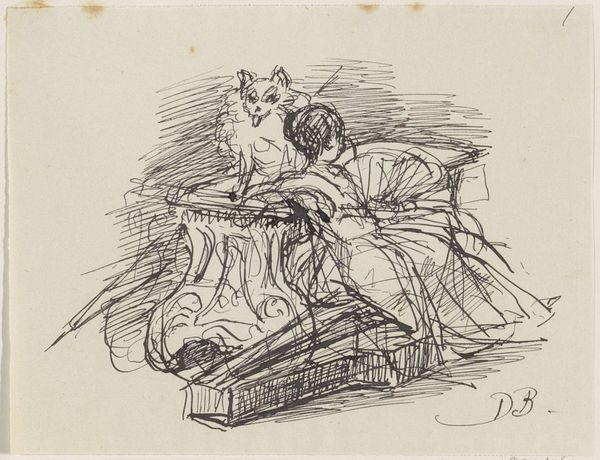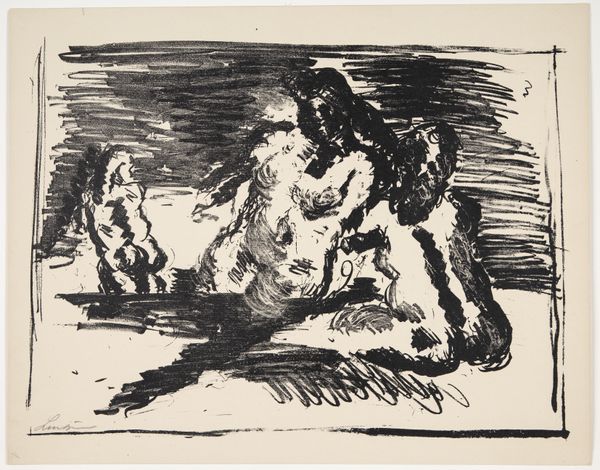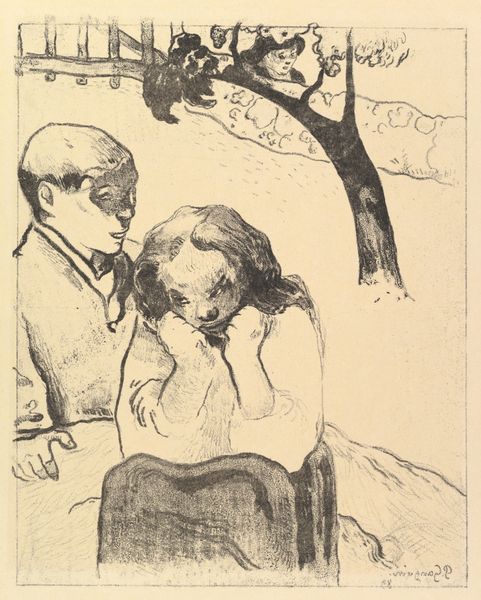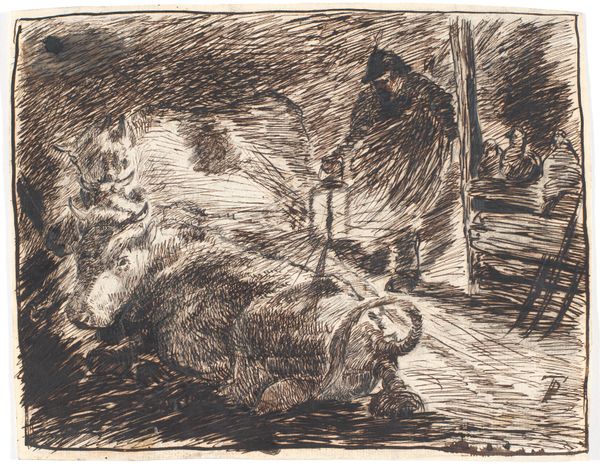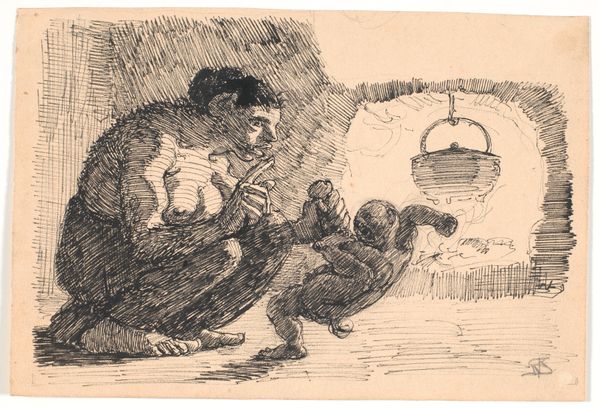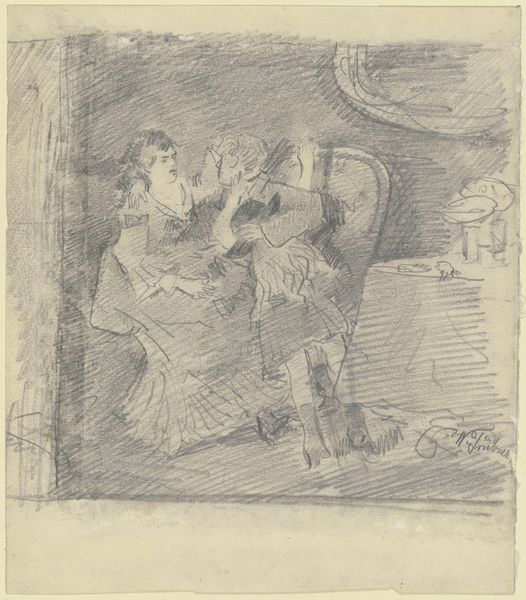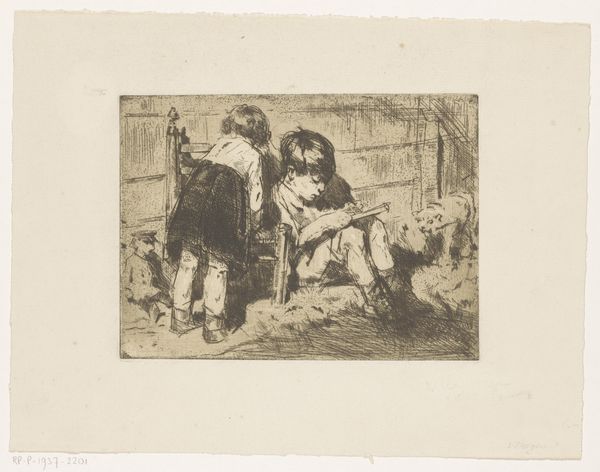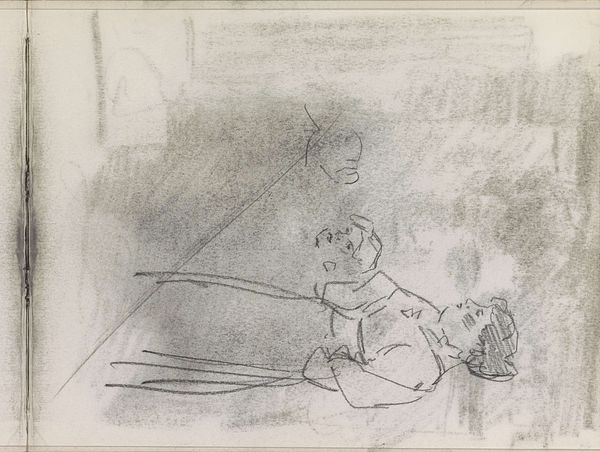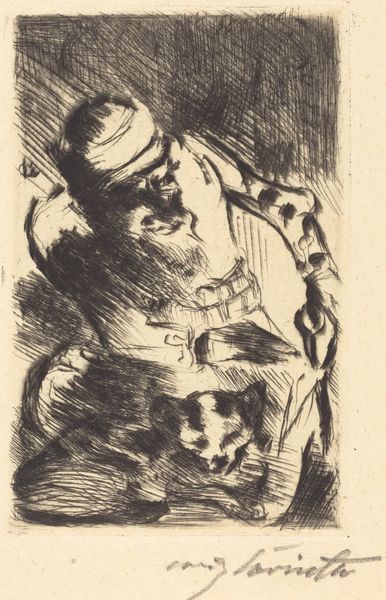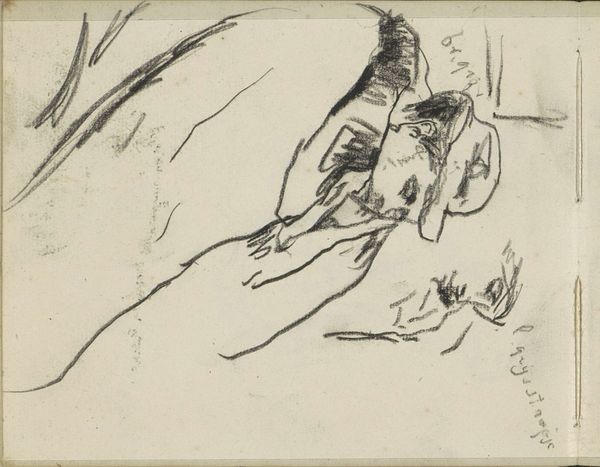
Dimensions: height 73 mm, width 135 mm
Copyright: Rijks Museum: Open Domain
This is a drawing called 'Houthakker' by Johannes Tavenraat, made with pen in the Netherlands, probably sometime in the mid-19th century. The drawing depicts a woodcutter resting in a forest, his axe discarded on the ground next to him, his dog laying by his side. In the 19th-century Netherlands, the lives of laborers were hard, and rural poverty was a common theme in art and literature. Tavenraat’s choice of subject matter may reflect an increasing interest in representing the lives of ordinary people. The Rijksmuseum, like many national museums, played a role in shaping cultural identity through its collections and exhibitions. By including works like this, museums helped to broaden the scope of what was considered worthy of artistic representation, reflecting a shift in social values and a growing recognition of the importance of all levels of Dutch society. Historians would look at things like Dutch social and economic history, the rise of Realism in art, and the development of museums to fully understand the social role of this drawing.
Comments
No comments
Be the first to comment and join the conversation on the ultimate creative platform.
